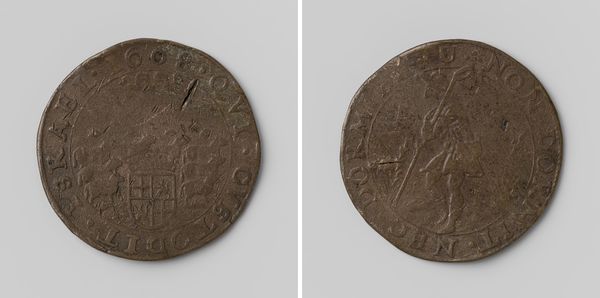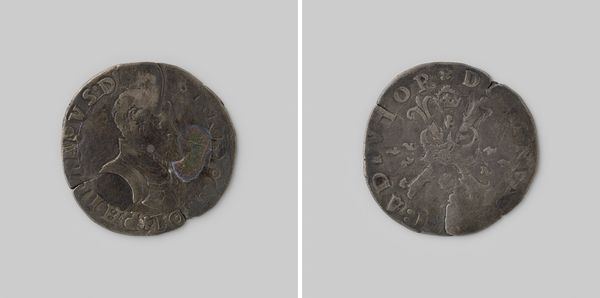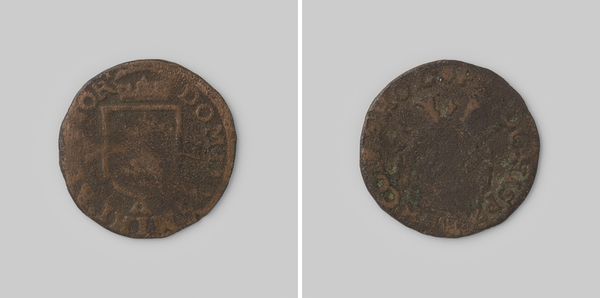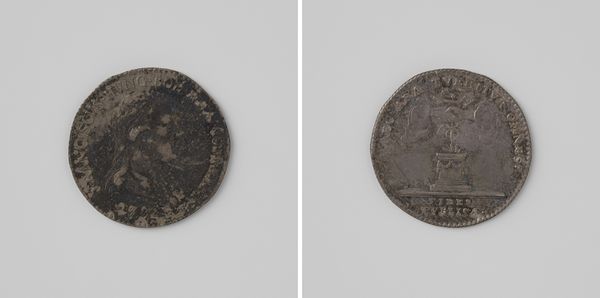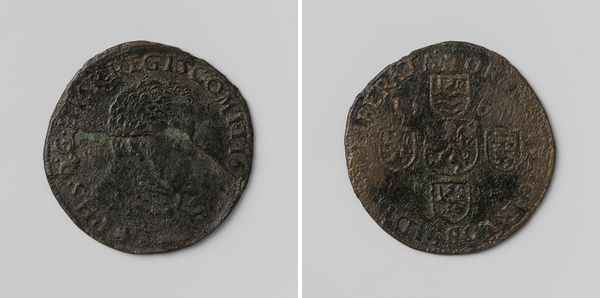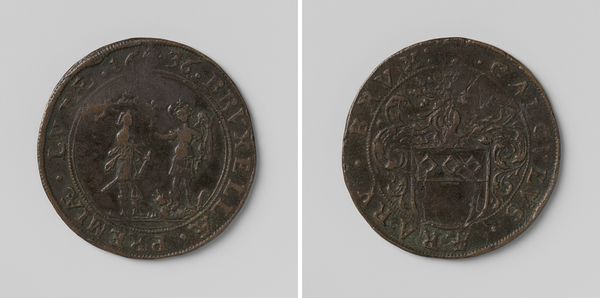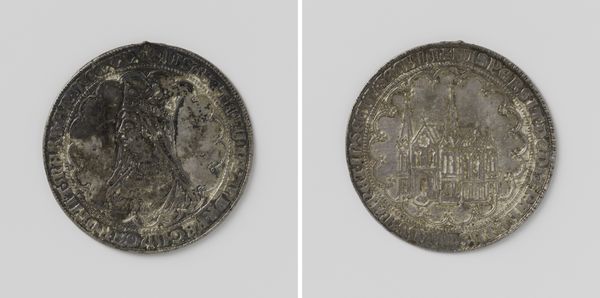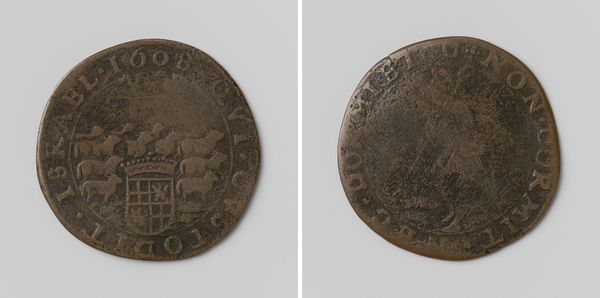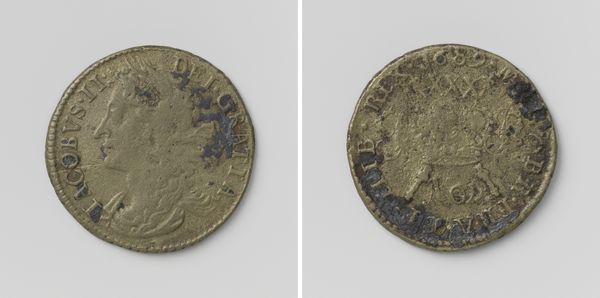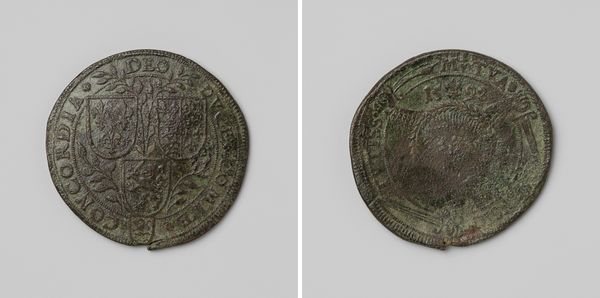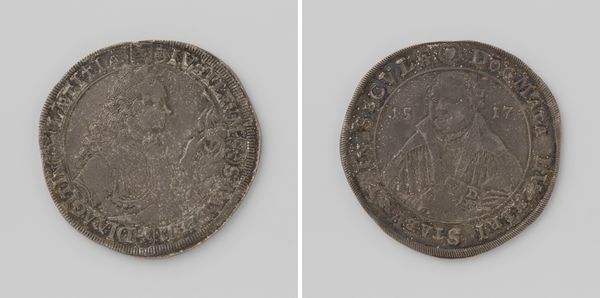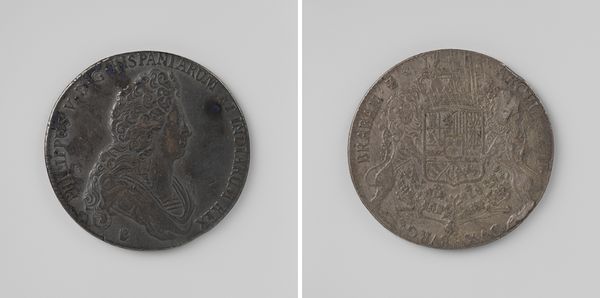
Filips II, koning van Spanje en zijn zoon Filips, verdedigers van het rooms-katholieke geloof 1592
0:00
0:00
metal, engraving
#
portrait
#
metal
#
11_renaissance
#
engraving
Dimensions: diameter 2.9 cm, weight 4.69 gr
Copyright: Rijks Museum: Open Domain
This small coin portraying Filips II and his son was made anonymously, and its simple copper materiality speaks volumes. The process of minting would have involved the creation of dies, a laborious task requiring skilled metalworkers to engrave the portraits and inscriptions in reverse. The coin was then struck, probably using a drop hammer, a semi-industrial process that could quickly produce multiples. Copper, being less valuable than gold or silver, signals the coin's probable use in everyday transactions, embedding it in the economic life of the period. The worn texture and muted color tell a story of circulation, of being passed from hand to hand, each bearing the weight of political power. The portraits and declarations cast onto the coin reveal the labor of image-making as a tool for propaganda and a source of cultural significance, reflecting the social and political tensions of the time. Appreciating this, we can move beyond the fine art and consider the broader context of craft and society.
Comments
No comments
Be the first to comment and join the conversation on the ultimate creative platform.
